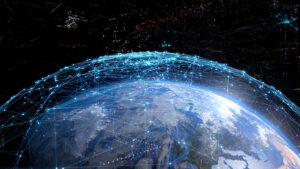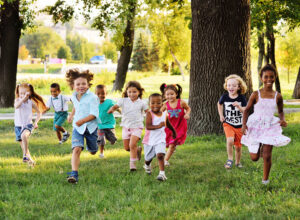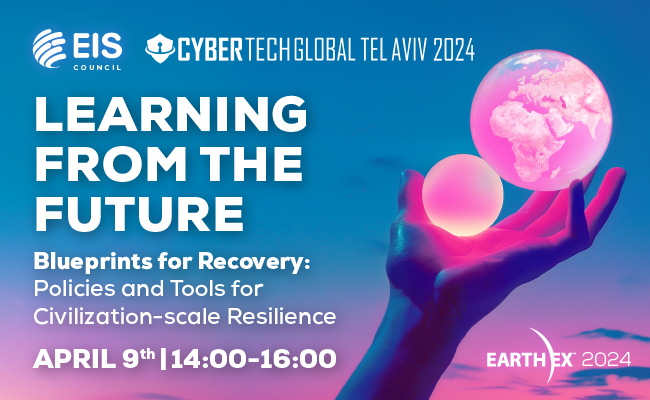Oct. 7: The death of childhood. The birth of hope
A letter from Jerusalem
— Avi Schnurr
From monstrous horror …
As a religious Jew, I pray every day. And praying with me and my neighbors, there are always children. Young boys, some as young as seven or eight. Some are old enough to lead the psalms that begin our service. Others sit together, their words and prayers punctuated by playful pokes, whispers and giggling.
There are those who try to quiet them – decorum, concentration – but not me. Laugh. Giggle. Show God what it means to be a happy child. There are so many – so many who will never laugh again.
In our small, beautiful towns, surrounded by farms, vineyards, orchards … and by cowardly, demonic murderers. Children, friends, parents. Terrified – alive and broken – or dead. All victims of the depraved, unspeakable massacre carried out by Hamas monsters, whose brutal calculations called for horror in Israel and, in Israel’s choiceless response, misery and death for Gaza.
… to the beginning of hope
The White House. No. 10 Downing Street. Berlin. Bulgaria. Kyiv. Paris. Sofia. Bucharest. Sydney. The European Union. Government buildings and landmarks across the world were bright with the colors of Israel’s flag after the Oct. 7 attacks. And in the days and weeks that followed, the support has not wavered.
Ι Nations across the world are standing with Israel. With hope – for Israel, and all of humankind.
While there are those, either ignorant or evil themselves, who support the murderers, the leaders and the people of free nations across the world are standing with Israel. With hope. Hope for Israel, for their nations, for all of humankind.
Now more than ever before, we understand that our world has changed
If there is any small ray of light escaping the unforgiving blackness of Oct. 7, it is the beginning of a new understanding of the fragility of the thin layer of civilization we have pasted, so painstakingly, onto the surface of our world.
Ruthless, barbaric attacks in Israel are hammer blows that cause tremors in Kyiv, in Paris, London, Berlin and Washington. They shake the fragile stability of a world already trembling from Russia’s vicious war on Kyiv; from China’s remorseless tightening of the noose around Taiwan; from Iran’s cynical sale of its people’s future to fuel a ring of fire around Israel, threatening the world.

Like it or not, our world has indeed changed.
There are now 8 billion of us sharing this one small, tightly interconnected planet. And as pandemic, war and terror have shown us, interconnected means standing, or falling, together.
Our fragile civilization, like a biological organism, is vulnerable to wounds no matter where they occur. It can only survive if we work to ensure the health, resilience and well being of all its parts.
Growing the light
Our world has become so tightly bound together that manmade disasters like Oct. 7 threaten global disruption and unimaginable risk for us all. Yet that same interdependency also makes our civilization, and the closely interwoven infrastructures and supply chains that nourish it, vulnerable to expanding natural disasters: severe solar storms, extreme weather, massive earthquakes, high morbidity pandemics and other mega-hazards.
May the tiny ray of hope ignited by the blue and white illuminating so many national landmarks mark the beginning of a new level of commitment to protecting our world. Of standing together in commitment to human values, and to strengthening the foundations of an increasingly brittle world.
Ι It will take commitment. Even if it means going beyond, pushing the envelope. Pushing the limits of what is achievable in our day-to-day jobs.
So that terrorists and rogue nations will understand that humanity will not accept them. So that we will all, collectively, find ways to invest in robust, resilient infrastructures, sectors and supply chains that can continue to feed, clothe and warm us, and will not fail our children or generations yet to come.
It will take commitment. Even if it means going beyond, pushing the envelope. Pushing the limits of what is achievable in our day-to-day jobs.
Commitment. From national leaders. From corporate executives. From NGOs; religious leaders; political parties.
Commitment. From ordinary people, all of us, across our one small planet.
Commitment to stand against terror, against cyber-attacks, against ruthless wars of conquest; to stand for a new and growing watershed of dedication to the human values and the resilience our world will need to live, to grow …
… and to sustain and grow the whispers, the giggles, the laughter that represent the great hope for our future.

- Please pass this on. And to learn more, visit eiscouncil.org
Create Impact with us:
Join our membership and
contribution programs
Participate in our
upcoming events:
Schedule a call with
our experts:
Advancing Earthquake Resilience: Strategic Urban Planning and Global Partnerships
In an era where urban landscapes continue to sprawl and the frequency of natural disasters seems to be on the rise, the importance of building resilient cities has never been more pronounced. Earthquakes, in particular, pose a significant risk to densely populated areas, with the power to cause extensive damage and incur millions in damage […]
Cyber Resilience in the Energy Sector: Safeguarding the Grid from Digital Disruptions
In today’s interconnected world, the energy sector stands as a vital backbone of national and global infrastructures, facilitating everything from lighting our homes to powering industries. However, this sector is increasingly finding itself in the crosshairs of cybercriminals, making cyber resilience not just a matter of technological integrity but of national security. The concept of […]
The Role of Local Governments in Strengthening Infrastructure Resilience
The significance of local governments in strengthening infrastructure resilience cannot be understated. Often perceived as entities primarily focused on addressing routine community concerns and improvements, their responsibilities extend far beyond these day-to-day operations. In the realm of preparing for and mitigating the effects of large-scale, catastrophic events—referred to as “black sky” disasters—local governments emerge as […]



